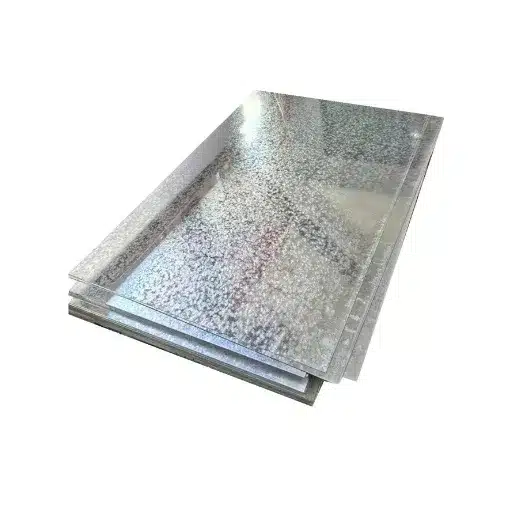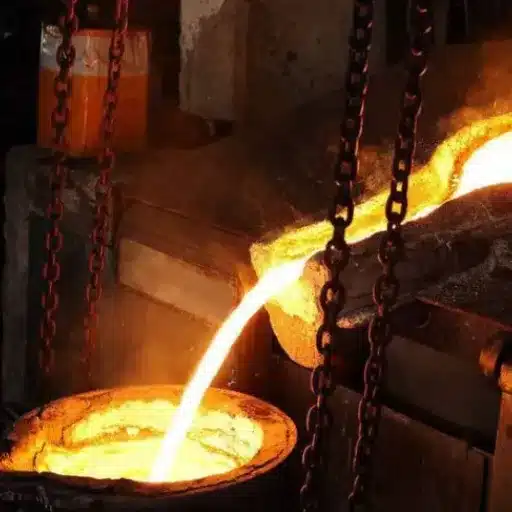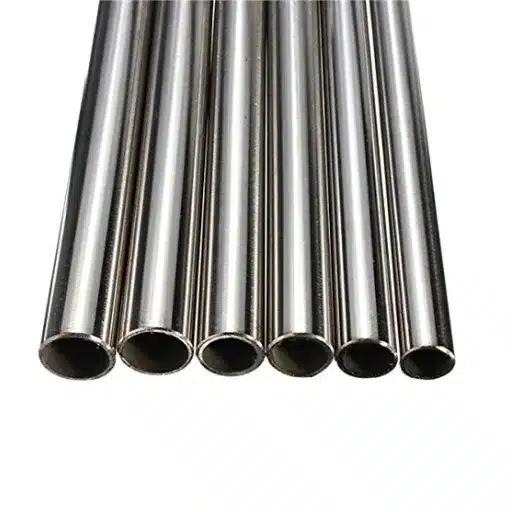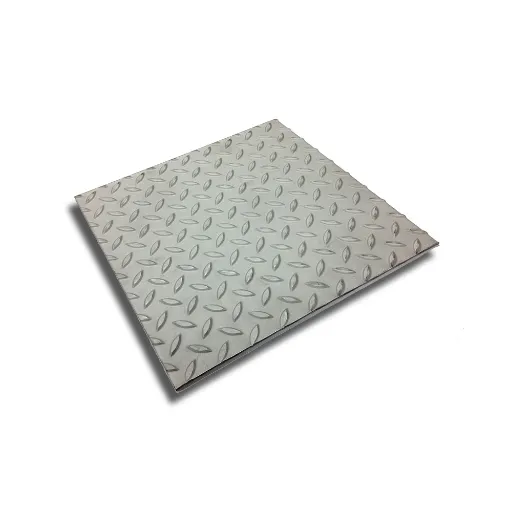The majority of us use a microwave mainly for quick and convenient heating. However, have you ever wondered whether it is safe to use stainless steel in microwave ovens? When we think of microwaving, stainless steel may not be the first material that comes to mind, but it is still one of the modern kitchen’s most common metals thanks to its beautiful appearance and strength. This article will not only talk about the risks and throw light on the tangled case of microwaving stainless steel but will also guide you through safe practices. Whether your concern is about the safety of heating up your leftover food in a stainless steel container or if you are not sure about the impact, this guide will help you make informed choices and steer clear of common mistakes.
Introduction to Stainless Steel and Microwaving
Overview of Stainless Steel Food Containers
Stainless steel food containers are a popular choice because they last long and keep food hot, but at the same time, they are not suitable for microwaving. The working principle of microwaves relies on electromagnetic waves and the interaction of these waves with the water molecules in the food, which causes heating to occur. Metals like stainless steel, however, reflect these waves instead of letting them through. When the waves are reflected back and forth in the microwave cavity, this could cause the microwave to be damaged or even lead to a fire.
⚠️ Important Safety Note: Stainless steel containers can cause heating to be uneven, as the metal acts as a barrier between the microwave’s energy and the food. So, even when the outer layer of your food is hot, the inside could still be cold, which is unsafe for reheating leftovers or preparing meals.
For the purpose of reheating or cooking, glass or ceramic containers which are safe for microwaving should be used. The reason is that these materials let microwaves pass through and thus heat the food properly. While stainless steel is a wonderful option for storing and transporting food, it should always be kept out of the microwave to safeguard the appliance and ensure your safety.
Common Misconceptions about Microwaving Stainless Steel
❌ Myth vs. ✅ Reality
| Common Misconception | The Reality |
|---|---|
| All metal will cause immediate fire or explosion in the microwave | While metal does create sparks and potential damage, the severity depends on the item. Thin and pointed metal sparks more, while thick and smooth stainless steel may not cause immediate harm but will prevent proper heating |
| Stainless steel heats food as effectively as other materials | Microwaves are reflected by stainless steel instead of being absorbed, preventing even heat generation in food. This may leave parts of the food cold and potentially unsafe to eat |
| Monitoring makes it safe to microwave stainless steel | This is a high-risk scenario since sparks or damage can happen very quickly and unexpectedly. Long-term damage to the appliance may occur even if no immediate dangers like fire are visible |
Importance of Microwave Safety
Safety precautions when using microwave ovens are crucial to preserve the appliance and eliminate the possibilities of hazards such as fires, electric shocks, or health risks. Using the wrong materials, such as metal or plastic that is not intended for microwave use, may lead to sparks, the release of harmful chemicals, or uneven heating—all of which are serious dangers. Making safety a priority ensures your microwave will work more efficiently and last longer.
✓ Essential Safety Checklist
- Use materials marked as “microwave-safe” only (glass, certified ceramics, specific plastics)
- Never use any type of metal, including stainless steel, as it reflects microwave energy
- Keep the microwave clean to prevent uneven absorption and hot spots
- Always check for the “microwave-safe” label on containers before use
- Perform periodic maintenance and follow manufacturer guidelines
Safety Concerns with Microwaving Stainless Steel

Why Stainless Steel is Not Microwave Safe
The use of stainless steel in microwaves is prohibited because it reflects microwave radiation, which can be dangerous. When incident microwaves interact with stainless steel, the reflected energy causes interference in the microwave oven. This interference can lead to arcing, where electric sparks form in the microwave. These electric sparks can damage the microwave’s internal parts, increase fire risk, or even cause injury to the user.
🔥 Fire Risk
Reflected microwave energy can cause arcing and sparks, potentially leading to fires inside the microwave cavity
❄️ Uneven Heating
Stainless steel blocks microwave energy, leaving food cold or partially heated, which poses food safety risks
⚡ Appliance Damage
Electric sparks can ruin internal components, leading to costly repairs or replacement
Moreover, the contours and shapes of stainless steel containers can increase the dangers involved. Sharp edges, sharp bends, or small pointed parts can more easily cause and amplify arcing, potentially burning through either the steel or the microwave’s interior. Because of these dangers, it is recommended to always avoid using stainless steel in a microwave oven and instead use designated microwave-safe containers such as glass, ceramic, or certain plastics.
The Risk of Arcing in Microwave Ovens
Arcing is a well-known occurrence in microwave ovens where electricity flows between two conductive surfaces. It can produce sparks that are hazardous and might even require appliance replacement. The main cause of arcing is the presence of metallic materials inside the microwave that obstruct electromagnetic waves and cause the formation of active energy spots. Even a tiny piece of aluminum foil on food might create an arc.
How Arcing Occurs
- Electromagnetic Wave Reflection: Microwaves use non-ionizing radiation to excite water molecules in food, creating heat
- Metal Interference: When conductive materials like steel or aluminum are present, electromagnetic waves are reflected instead of absorbed
- Energy Amplification: This reflection amplifies the energy, culminating in sparking
- Concentration Points: Pointed or sharpened materials pose greater danger as they generate electromagnetic energy buildup in small areas
Common Culprits Behind Arcing:
- Aluminum foil
- Metallic decorations on plates
- Overlooked staples in food packaging
- Twist ties
- Metal-trimmed dishware
The only way to eliminate the risk of arcing is to thoroughly observe safety rules and use only those containers and utensils marked as microwave-safe. Regular cleaning of the microwave interior is also important because food residue can sometimes cause sparking if it contains metallic compounds.
Understanding Heat Distribution and Food Safety
Microwave ovens have revolutionized the cooking and heating of food, yet to ensure food is safe to eat, it is necessary to understand thermal distribution in these appliances. Microwaves operate by inducing water molecules in food to vibrate, thereby generating heat that cooks the food from the inside out. However, this phenomenon can generate hot and cold spots in food, as microwaves do not penetrate food uniformly—penetration is highly dependent on the food’s composition, shape, and size.
💡 Best Practices for Even Heat Distribution
| Technique | Benefit |
|---|---|
| Stir During Cooking | Helps distribute heat evenly throughout the food |
| Rotate Food | Ensures all areas receive equal microwave exposure |
| Use Microwave-Safe Dishes | Designed to distribute heat more effectively |
| Thaw Before Cooking | Prevents undercooked areas in frozen items |
| Check Internal Temperature | Ensures food reaches safe 165°F (73.9°C) as per USDA guidelines |
Cutting-edge microwave technology like sensor cooking and inverter systems are improving heat distribution and food safety. Sensor cooking modifies the microwave’s power and duration according to humidity released by food, leading to consistent heating. Inverter technology provides uniform and constant power supply instead of traditional on-and-off cycling, reducing the risk of hot and cold spots.
Alternatives to Microwaving Stainless Steel Containers
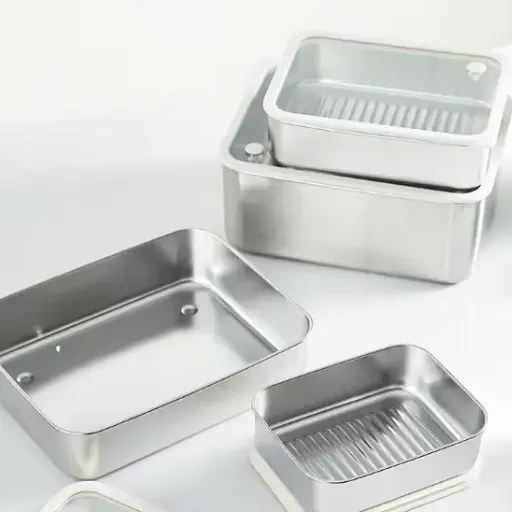
Recommended Microwave-Safe Food Containers
Safety and functionality should be given equal priority when choosing microwave containers. Here are the most recommended materials:
🥃 Glass Containers
Best Choice: Borosilicate glass
- Non-reactive
- Durable
- Excellent temperature resistance
- Prevents chemical leaching
🏺 Ceramic Containers
Note: Must be microwave-safe labeled
- Non-reactive
- Retains heat well
- Avoid metallic decorations
- Check for proper labeling
🥡 BPA-Free Plastic
Caution: Check for damage before use
- Lightweight
- Convenient
- Must be microwave-safe certified
- Replace if warped or cracked
🍳 Silicone Containers
Benefits: Flexible and versatile
- Microwave-safe
- Easy to handle
- Lightweight
- Easy to clean
⚠️ Important: Always look for “microwave-safe” labels or markings to ensure containers meet industry safety standards. Avoid containers with metallic trims or decorations regardless of the base material.
Safe Heating Practices without Stainless Steel
Microwaving food safely involves selecting suitable alternatives to stainless steel and following proper heating techniques. Here are key practices to ensure optimal results:
📋 Step-by-Step Safe Heating Guide
Step 1: Choose the Right Container
Select borosilicate glass or certified ceramic containers. Ensure they are free from metallic decorations.
Step 2: Arrange Food Properly
Place food evenly in the container. Cover with a microwave-safe lid or wrap to reduce uneven heating and retain moisture.
Step 3: Monitor and Adjust
Stir food or rotate the container halfway through heating for even temperature distribution. Use microwave-safe splatter guards to keep the appliance clean.
Step 4: Check Temperature
Verify food has reached safe internal temperature. Use a food thermometer to ensure proper heating.
Step 5: Inspect Containers Regularly
Check containers for physical damage like cracking or warping. Always use top-grade materials that conform to current safety standards.
Using Glass and Ceramic as Alternatives
Glass and ceramic containers for microwaving have become not only safe but also highly efficient, making them excellent choices for kitchen items that encourage microwave cooking and reheating. These materials are non-reactive, so they will not release harmful substances into food like certain plastics do under heat.
✓ Advantages of Glass and Ceramic
| Feature | Glass | Ceramic |
|---|---|---|
| Heat Resistance | Excellent (especially borosilicate) | Very Good (when properly labeled) |
| Visibility | Transparent – easy monitoring | Usually opaque |
| Heat Retention | Moderate | Excellent – keeps food hot longer |
| Durability | High (resistant to thermal shock) | High (but can crack if not microwave-safe) |
| Safety | Non-reactive, no chemical leaching | Non-reactive, no chemical leaching |
| Modern Features | Airtight silicone lids available | Airtight wooden/silicone lids available |
⚠️ Important Considerations
- For Ceramic: Most ceramics, especially decorative or handmade ones, may not withstand microwave heat and can lead to cracking or structural weakening. Always verify microwave-safe labeling.
- For Glass: Must be properly labeled as heat-resistant or microwave-safe to avoid shattering under thermal stress. Look for certified microwave-safe glass containers.
Modern glass and ceramic containers often come equipped with airtight caps made from silicone or wooden materials that protect the flavor and quality of food during reheating. Users appreciate the excellent visibility of glass, which allows easy monitoring of the heating process to avoid overcooking. These innovations keep glass and ceramic at the center of culinary practices, making microwave cooking safer, healthier, and more sustainable.
Best Practices for Handling Metal in the Kitchen
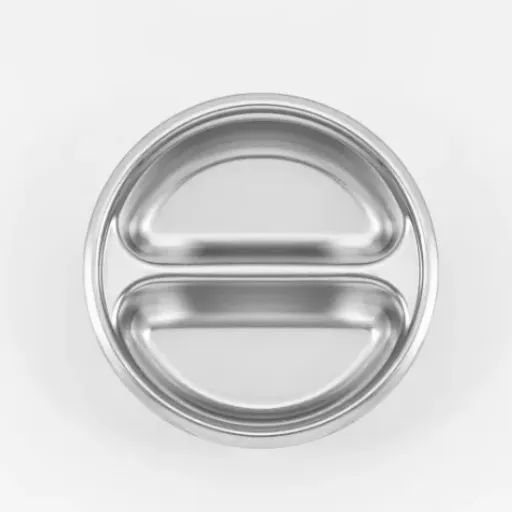
Guidelines for Safe Use of Metal Containers
The use of metal containers in the kitchen requires following specific safety practices to prevent accidents and achieve optimal outcomes:
🔧 Metal Container Safety Guidelines
✗ Never in Microwave
Metal reflects microwaves, causing sparks, appliance damage, and potential fire hazards. This is non-negotiable.
✓ Stovetop and Oven
Metal containers are perfect for stovetop or oven use due to their durability and even heat distribution properties.
⚠️ Check for Food Safety
Look for labels confirming food-safe certification. Stainless steel is typically safe, while uncoated aluminum can react with acidic foods.
🔍 Inspect Regularly
Check metal cookware for dents or warping, which can affect both safety and cooking performance.
Tips for Heating Food Safely
🌟 Essential Food Heating Safety Tips
1️⃣ Use Microwave-Safe Containers
Always verify that containers bear the “microwave-safe” label. Suitable materials include glass, ceramics, and certified microwave-safe plastics that prevent harmful chemical release during heating.
2️⃣ Avoid Overheating Food
Excessive heat can cause uneven cooking and destroy nutrients. Heat food to the safe recommended temperature—165°F (74°C) for leftovers, according to food safety guidelines.
3️⃣ Stir and Cover Food
Ensure even heating by stirring food periodically and covering the container with a loosely fitted lid. This minimizes cold spots where bacteria can survive.
4️⃣ Check for Even Heating
Use a food thermometer to verify food has reached the required safe internal temperature—especially crucial for dense dishes like casseroles or soups.
5️⃣ Avoid Heating in Damaged Containers
Never use cracked, dented, or scratched containers for reheating food, as they might release harmful substances or create contamination risks.
6️⃣ Avoid Metal in Microwaves
Never place containers with metal parts or aluminum foil in a microwave oven, as this can cause sparking, appliance damage, or fire.
Manufacturer Recommendations for Kitchen Safety
Following manufacturer recommendations is crucial for ensuring maximum safety and extending the lifetime of kitchen appliances. Here are key practices to implement:
- Read the Manual: Always check the appliance’s instruction manual for individual usage policies and specific guidelines
- Regular Maintenance: Clean and maintain appliances regularly to prevent residue buildup that may cause inefficiency or fires
- Proper Accessories: Use only recommended accessories for your kitchen appliances to prevent malfunction
- Avoid Overloading: Never overload power strips, as this can increase the risk of electrical fires
- Unplug When Not in Use: Disconnect appliances when not in use, especially those susceptible to power surges
- Utilize Safety Features: Modern appliances come with automatic shutdown and temperature control—these should complement, not replace, sensible usage
Expert Recommendations for Cooking and Food Storage

Best Practices for Using Stainless Steel in Cooking
Efficient usage of stainless steel cookware requires understanding its properties and implementing proper maintenance techniques. While stainless steel should never be used in microwaves, it excels in other cooking applications when handled correctly:
🍳 Stainless Steel Cooking Best Practices
| Practice | Purpose | Benefit |
|---|---|---|
| Preheat Cookware | Ensures even heat distribution | Reduces food sticking to surface |
| Use Adequate Oil/Butter | Creates non-stick barrier | Achieves perfect browning and prevents sticking |
| Use Appropriate Utensils | Prevents surface damage | Extends cookware lifespan |
| Clean with Soft Materials | Maintains polished finish | Keeps cookware looking new |
| Cool Gradually | Prevents warping | Maintains structural integrity |
💡 Pro Cleaning Tips
- For Daily Cleaning: Use warm soapy water and a soft cloth for polishing
- For Tough Stains: Mix baking soda with water to create a gentle, non-abrasive cleaning paste
- For Discoloration: Apply a gentle mixture of vinegar or lemon juice with water
- Avoid: Harsh materials, abrasive sponges, and immediate temperature changes
Maintaining the Longevity of Stainless Steel Containers
Stainless steel containers are excellent in terms of durability, hygiene, and sustainability. Here are key maintenance practices that will ensure their longevity:
🧼 Immediate Cleaning
Clean containers immediately after use to prevent stains or buildup, especially from acidic or salty foods that can compromise the steel’s surface over time.
🏪 Proper Storage
Store stainless steel containers in a dry place to prevent corrosion, especially in areas with high humidity. Ensure they are completely dry before storage.
🌡️ Temperature Management
Avoid heating containers and then placing them directly in cold environments, as this can warp the metal. Allow gradual cooling.
✨ Surface Restoration
If the surface develops discoloration or a “rainbow” hue from heat exposure, use a gentle mixture of vinegar or lemon juice with water to restore it.
💚 Sustainability Note: Following these maintenance practices not only ensures the items’ longevity but also supports a more sustainable approach to food storage and cooking, reducing the need for frequent replacements.
📚 References
- MIT – Why can’t we put metal objects in a microwave? (Explains the dangers and ineffectiveness of placing metallic objects in microwaves)
- Iowa State University – Safe Food Storage Containers (Discusses material properties and microwave compatibility)
- Rochester Institute of Technology – Tips for a Healthy Pregnancy (Advises against using stainless steel for reheating in microwaves)
- Click here to read more.
Frequently Asked Questions (FAQ)
❓ Can stainless steel be microwaved safely?
Although stainless steel is a durable material, it is not recommended for microwaving. The material reflects microwave energy, which can lead to uneven cooking and potential damage to the microwave. Only use stainless steel items that are specifically labeled as microwave-safe, though such items are rare.
❓ What types of stainless steel can be used in microwaves?
Some stainless steel food storage containers are designed to be microwave-safe as they can handle high temperatures. However, always look for products explicitly marked as “microwave-safe stainless steel” to ensure they can be used without safety concerns. These are extremely rare in the market.
❓ Are there any specific grades of stainless steel that are safe for microwaving?
304 stainless steel is the most widely used grade, known for exceptional corrosion resistance and durability. However, even this grade is not recommended for microwave use unless the product is specifically designed and labeled for that purpose.
❓ What happens if I microwave regular stainless steel?
Using regular stainless steel in the microwave may cause various problems including sparks, uneven heating, and possible damage to the microwave oven. It is essential to use microwave-safe kitchenware to avoid these issues and ensure both food safety and appliance longevity.
❓ How can I tell if my stainless steel kitchenware is microwave-safe?
Look for a label or marking from the manufacturer that indicates microwave safety. Items designed for microwave use will have clear indications of their microwave-safe status. When in doubt, contact the manufacturer or avoid using it in the microwave altogether.
❓ Can I use stainless steel containers for lunch in the microwave?
It’s not advisable to microwave lunches in ordinary stainless steel containers unless they are specifically marked as microwave-safe. Always prefer containers that have been thoroughly tested and certified for microwave safety, such as glass or ceramic options.
❓ What alternatives can I use instead of stainless steel in the microwave?
The best alternatives are glass or ceramic containers that are certified as microwave-safe. These materials allow microwaves to pass through properly and won’t reflect microwave energy, ensuring safe and even heating of your food.
❓ Is there any stainless steel tableware that can be safely used in the microwave?
The majority of stainless steel tableware is not suitable for microwaving. However, some specialized products are designed with microwave safety in mind. Always check product descriptions and look for items that come with a microwave-safe label before use.
❓ Can I safely use stainless steel utensils in the microwave?
Under no circumstance should stainless steel utensils be used in the microwave. It is more appropriate to use utensils made from microwave-safe materials to ensure your food is heated evenly and safely without risk of sparking or appliance damage.
🎯 Key Takeaways
- Stainless steel should never be used in microwave ovens due to safety risks
- Metal reflects microwave energy, causing sparks, uneven heating, and potential appliance damage
- Always use microwave-safe alternatives like glass, ceramic, or certified plastics
- Follow proper heating practices including stirring, covering, and checking internal temperatures
- Stainless steel excels in stovetop and oven cooking when properly maintained
- Regular maintenance and following manufacturer guidelines ensure appliance safety and longevity
⚡ Stay safe in the kitchen by making informed choices about your cookware and heating methods! ⚡


